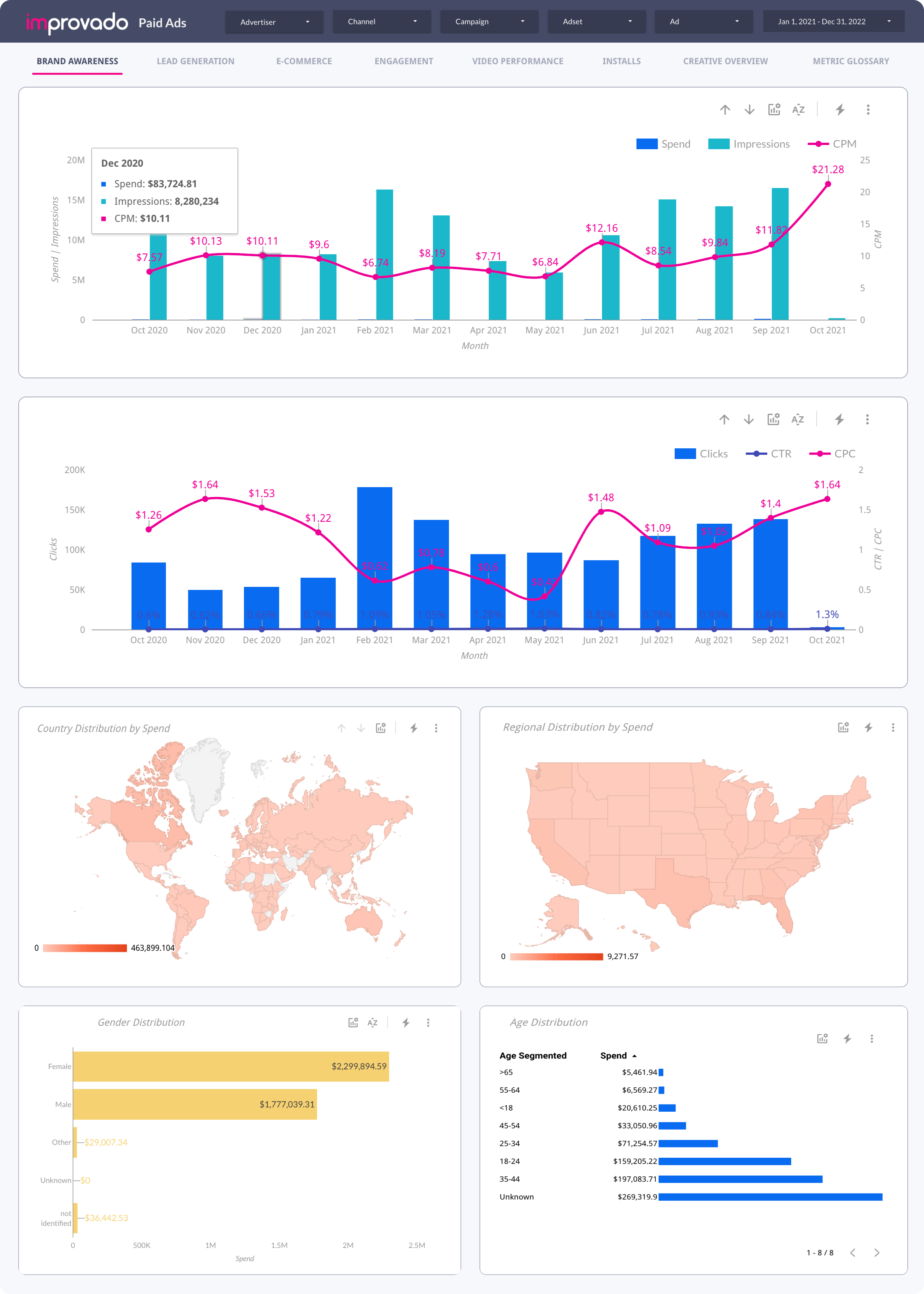Navigating the world of business analytics, marked by data, insights, and strategic decision-making, can seem a complex endeavor. Yet, for decision-makers in today's competitive marketplace, understanding this field is no longer optional—it's essential. Mastering business analytics has the potential to drive informed decisions, steer performance improvement, and provide a substantial competitive edge.
This comprehensive guide explores the depth and breadth of business analytics, shedding light on how it informs data-driven decision-making. It lays the groundwork, covering everything from the fundamental aspects to advanced techniques and applications.
When to Use Business Analytics
Having a grasp of what business analytics entails, it's crucial to understand when it can be most effectively employed. Here are several key situations that signal it's time to utilize these tools and techniques.
Customer Behavior Analysis
Business analytics can delve into vast amounts of data to decode consumer behavior, preferences, and buying patterns. It can highlight trends and anomalies, enabling companies to better understand and cater to their target market's needs.
Competitive Analysis
Business analytics can gather and analyze data related to competitors, helping organizations understand the market landscape. This information can be used to benchmark performance, identify gaps in the market, and formulate strategies to outperform competitors.
Predictive Modeling
Business analytics can utilize historical data and trends to predict future market behaviors. These predictions enable organizations to anticipate changes in demand, customer preferences, or market trends, allowing for proactive decision-making.
Operational Efficiency
Business analytics can highlight inefficiencies in various processes, allowing businesses to streamline operations, reduce waste, and enhance productivity, all leading to significant cost savings and improved performance.
Performance Evaluation
Business analytics provides a precise way to measure and track performance against established goals and objectives. It gives managers and executives a clear view of how different business areas perform and where adjustments may be needed.
Risk Management
Analyzing historical data and leveraging predictive analytics helps organizations identify potential risks and take proactive measures to mitigate them. Business analytics provides valuable insights into market volatility, financial risks, and potential disruptions, enabling organizations to make informed decisions and manage uncertainties effectively.
How Business Analytics Helps in Business
By unlocking the potential of data, business analytics can significantly contribute to various aspects of a business and help organizations excel in their respective industries.
Informed Decision Making
By delivering data-driven insights, business analytics provides the necessary knowledge and foresight, enabling companies to devise strategies that align with market trends and customer needs. From identifying new markets to predicting sales trends, business analytics brings clarity to strategic planning.
Enhanced Efficiency and Productivity
Business analytics can unveil inefficiencies in operations, helping businesses optimize their processes. Whether it's streamlining the supply chain, improving production schedules, or enhancing service delivery, business analytics pinpoints areas for improvement, leading to cost savings and better productivity.
Improved Customer Understanding
Business analytics provides valuable insights into customer preferences, behavior, and needs. By leveraging this information, organizations can tailor their products, services, and marketing strategies to better meet customer expectations and drive customer satisfaction.
Competitive Advantage
Utilizing business analytics enables organizations to gain a competitive edge. By analyzing market trends, consumer behavior, and competitor strategies, businesses can identify unique opportunities, differentiate themselves, and stay ahead of the competition.
How Business Analytics Works
Navigating the intricacies of business analytics might be challenging at first, but when distilled down, it follows a clear, methodical process. Here's a step-by-step breakdown of how business analytics works.
Data Collection
Business analytics starts with data collection, forming the groundwork for the subsequent analysis. This stage involves gathering data from myriad sources, including databases, transactional records, customer feedback, web analytics, social media interactions, industry reports, and market research. These data sources hold valuable information on various aspects of business operations, customer behavior, and market dynamics.
Data Cleaning and Preparation
With data in hand, the next critical step is data cleaning or preprocessing. This phase involves dealing with missing values, outliers, duplicates, and inconsistent entries. It's vital to ensure the data's integrity, as errors, inconsistencies, and irrelevant data points can skew analysis results, leading to misleading conclusions. This process often requires advanced tools and skills to effectively filter, clean, and transform the raw data into a ready-to-analyze dataset.
Data Analysis
Once the data is clean and ready, it's time for the analysis stage. Utilizing statistical techniques, machine learning algorithms, and data visualization tools, businesses extract meaningful patterns, trends, and relationships from the data. The analysis could be descriptive, examining past performance; diagnostic, explaining why certain outcomes occurred; predictive, forecasting future results; or prescriptive, recommending actions to achieve desired outcomes. The specific type of analysis performed depends on the business questions being asked and the nature of the decision-making process.
Data Visualization and Reporting
Data visualization tools are used to present insights in a clear, concise, and visually appealing manner. This facilitates effective communication and enables stakeholders to grasp the information easily.
Insights and Interpretation
The ultimate objective of business analytics is to generate actionable insights. This stage is where data is transformed into strategic knowledge. It could involve discovering hidden trends, identifying key customer segments, detecting operational inefficiencies, or forecasting future performance. These insights not only provide answers to pressing business questions but also uncover new opportunities and challenges that may not have been apparent otherwise.
Action and Evaluation
The final stage of the business analytics process is acting on these insights and then evaluating the outcomes. This phase involves implementing the recommended actions derived from the insights, such as launching a marketing campaign, introducing a new product, or adjusting operational processes. The impact of these actions is then evaluated using relevant performance metrics, providing a measure of the effectiveness of the analytics process. This feedback is used to refine future analytics processes, fostering a continuous cycle of improvement and optimization.
How Business Analytics Is Used in Marketing
Business analytics has revolutionized marketing strategies by enabling organizations to make data-driven decisions and optimize their marketing efforts. Here's how it is used in marketing.
Customer Segmentation
Business analytics helps segment customers based on demographics, behavior, and purchasing patterns. This enables organizations to tailor marketing campaigns and messages to specific customer groups, increasing the effectiveness of their marketing efforts.
Campaign Optimization
By analyzing marketing campaign data, businesses can identify which channels, messages, or offers yield the best results. This information allows organizations to optimize their campaigns, allocate resources effectively, and maximize return on investment (ROI).
Predictive Analytics for Targeting
Leveraging predictive analytics, businesses can identify potential customers who are most likely to convert or respond to specific marketing initiatives. This helps optimize targeting efforts and improve the efficiency of marketing campaigns.
Personalization
Business analytics enables organizations to deliver personalized marketing experiences. By analyzing customer data and preferences, businesses can offer personalized product recommendations, targeted promotions, and customized content to enhance customer engagement.
Best Practices for Conducting Business Analytics
Conducting business analytics effectively requires a strategic approach and an understanding of the specific methods that drive optimal results. Here are more concrete best practices for conducting business analytics.
Align Analytics With Business Strategy
It's crucial to connect every analytics initiative with a strategic business objective. For example, if your organization aims to improve customer retention, your analytics should be geared toward understanding customer behavior and identifying churn signals. In this way, the insights gained will have direct implications for your strategic goals.
Implement Data Governance
Establish a robust data governance framework that includes clear policies on data collection, storage, access, and usage. This ensures consistency and reliability in your data while helping you maintain compliance with data privacy laws and standards, which is of great importance for large organizations operating in regulated industries.
Choose Suitable Analytic Tools
Depending on your specific needs and the scale of your operations, certain analytics tools may be more beneficial. Large enterprises might need sophisticated platforms capable of handling big data, integrating with other systems, and providing advanced analytic capabilities, such as AI and machine learning.
Ensure your analytics infrastructure can scale up to handle increasing data volume as your business grows. This might involve investing in cloud-based analytics solutions, which can easily scale up or down based on demand. A scalable infrastructure is also more cost-effective as it eliminates the need for large upfront investments in hardware.
Apply Predictive and Prescriptive Analytics
While descriptive analytics provides insight into what has happened, predictive analytics forecasts what might happen in the future, and prescriptive analytics suggests actions to optimize outcomes. For instance, you could use predictive analytics to forecast sales trends and prescriptive analytics to adjust your marketing strategy accordingly.
Invest in Data Security and Privacy
Large-scale data breaches can have catastrophic consequences. To protect your valuable data assets, invest in top-tier security measures, perform regular audits, and ensure strict access control. Furthermore, consider privacy laws and regulations when designing analytics processes to avoid costly non-compliance issues.
Develop Analytic Skills Across the Organization
Promote a data-literate culture within your organization by investing in ongoing training and development. Ensure your team understands not only how to use analytics tools but also how to interpret and apply the insights they generate. Encourage the use of data in daily decision-making processes at all levels of your organization.
Summing Up
Business analytics has become an invaluable asset for organizations seeking to thrive in today's data-driven business landscape. By utilizing business analytics, organizations can make informed decisions, optimize processes, and gain a competitive edge. Understanding when and how to use business analytics, along with implementing best practices, empowers organizations to unlock the full potential of their data and drive meaningful business outcomes. Embrace the power of business analytics, and embark on a transformative journey towards data-driven decision making and sustainable growth.
.png)




.png)
